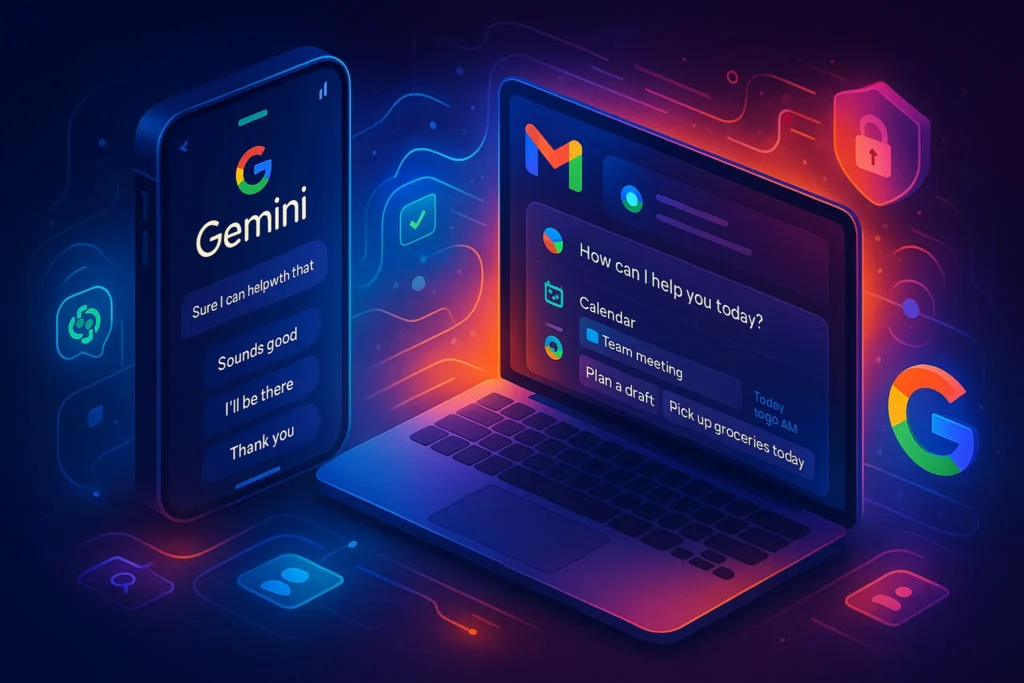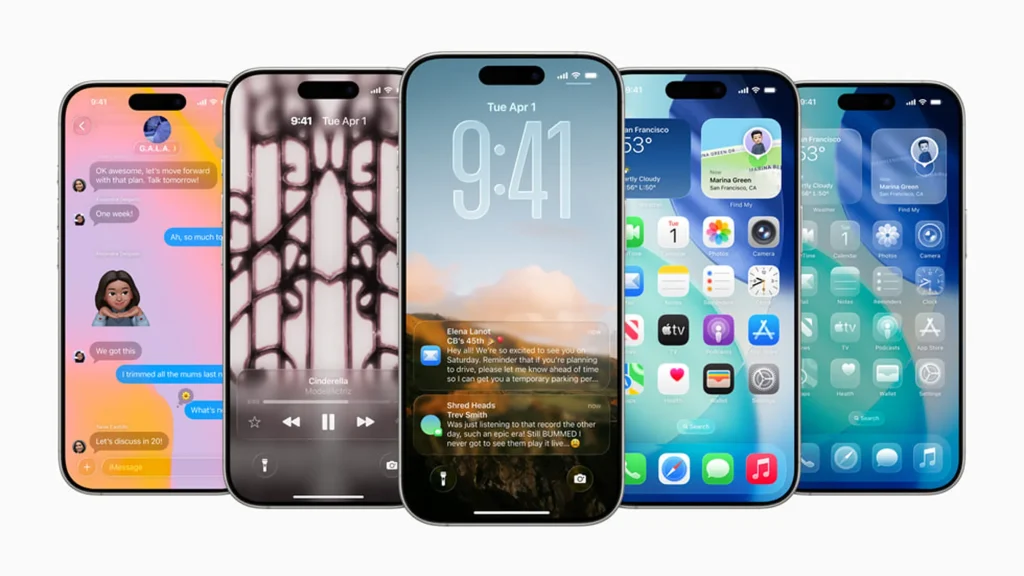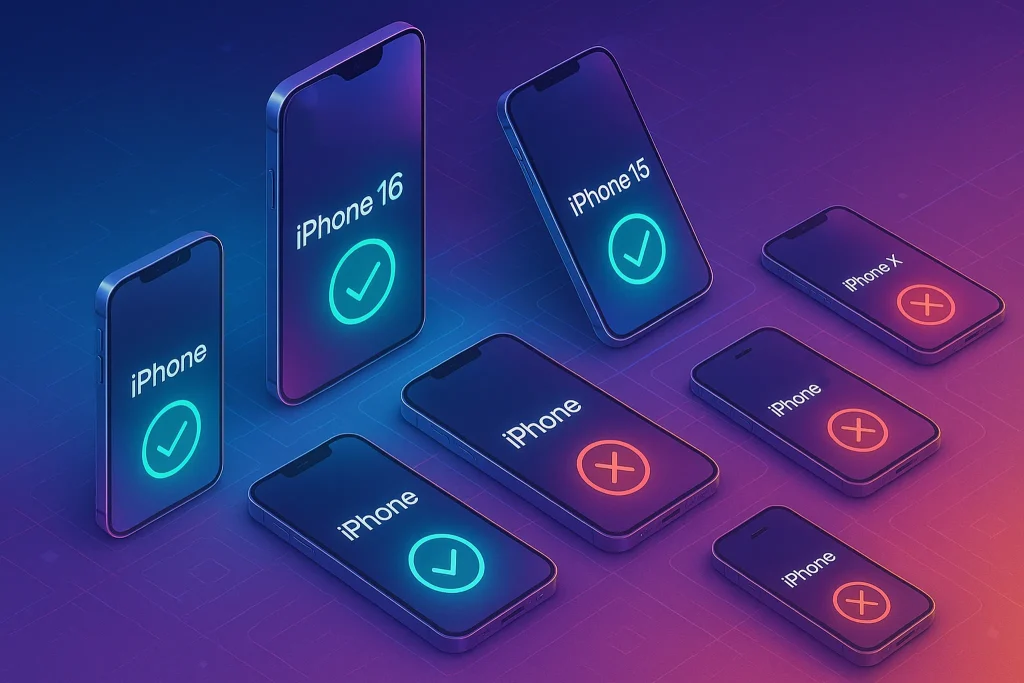-This post may contain affiliate links. If you click on one and make a purchase, I may earn a small commission at no extra cost to you.-
🌍 Introduction
In one of its boldest AI moves yet, Google has pushed out a series of updates in July 2025 that embed Gemini AI into your personal and professional life—more deeply than ever before.
From controlling calls and WhatsApp to writing your Gmail drafts and powering Search, Gemini is stepping into Google Assistant’s shoes… and beyond.
But these changes also raise big questions: How much control do users still have? Is Gemini helping—or creeping?
Let’s break down everything that just happened with Gemini in July 2025, what it means for you, and why this update is turning heads fast.
🧩 What’s New in Gemini AI (July 2025 Rollout)
1. Gemini “Gems” Are Now In Your Docs, Gmail, and Slides
As of July 2, Google has embedded “Gems”—customizable chatbot assistants—directly into Workspace apps. You can now summon a “Pitch Deck Gem” in Slides or a “Script Gem” in Docs without switching tabs.
This means bloggers, marketers, and even YouTubers (like we discussed in our guide to the Best AI Writing Assistants for YouTube Scripts can streamline workflows inside the tools they use most.
You build your own AI assistant for specific tasks. No prompt engineering needed.
2. Android: Gemini Is Now In Your Phone, Texts, and Apps
Starting July 7, Gemini gains new app access on Android—even if you’ve disabled “App Activity.” It can summarize WhatsApp chats, suggest replies in Messages, and even schedule calls.
Though Google offers opt-out options, many users are unsure how to access them. The privacy debate is heating up, just like we saw with AI personalization trends in our Best AI Writer Tools for Digital Marketers post.
3. Search Gets a New AI “Mode”
Search, now powered by Gemini 2.5, can combine multiple sources to generate full contextual answers. Whether you’re speaking a query aloud or uploading an image, Google can answer faster and deeper—using multimodal processing.
Think of it as a chatbot layered on top of Google’s index.
4. Gemini Model Updates: Pro, Flash, and Flash-Lite
Google finalized its Gemini 2.5 model family:
-
Pro: High reasoning and creative writing
-
Flash: Fast, affordable responses
-
Flash‑Lite: Ultra-fast, lightweight model for casual tasks
All older preview models are being retired by end of July.
🔐 Why It Matters (Now)
-
Daily Users Are Already Affected: Millions are seeing Gemini-enabled replies in Gmail and new voice suggestions on Pixel.
-
Confusion Breeds Friction: Many Android users report not knowing Gemini is acting behind the scenes.
-
Content Creation Is Getting Faster: The Gemini “Gems” integration makes it easier than ever to produce personalized content inside Google tools.
-
Google wants Gemini to scale across every device tier—from server clusters to budget phones. Flash-Lite is being tested on Nest and Pixel Buds, meaning your earbuds might soon summarize calls or emails in real time.
🧠 Gemini’s Evolution: From Chatbot to Contextual Ecosystem
To fully grasp why the July 2025 update is such a turning point, we need to step back and look at Gemini’s trajectory.
When Gemini launched as a competitor to ChatGPT and Claude, its early identity was simply a multimodal chatbot. It handled text, vision, and even some code generation—but it wasn’t deeply integrated into Google’s ecosystem.
Fast forward to today: Gemini has transformed into an embedded intelligence layer across Android, Workspace, and Chrome. Rather than being “a tool,” Gemini is now part of your digital environment, working in the background to offer suggestions, complete tasks, and respond proactively.
This isn’t an assistant you open. It’s a presence that listens and acts—sometimes before you even ask.
🔍 Deep Dive: Gemini “Gems” in Workspace
The most immediate change for professionals is the launch of Gems in Workspace apps like Gmail, Docs, Sheets, and Slides. These aren’t just chatbots—they’re task-specific AI profiles you can build, train, and reuse.
Real Use Case: Blogging with Gemini Gems
Imagine you’re a blogger working on a travel piece. You could create:
-
A “Style Polisher Gem” to clean up tone and grammar.
-
A “SEO Title Optimizer Gem” trained on your past headline successes.
-
A “Summarizer Gem” that auto-builds newsletter blurbs from finished articles.
All of this now happens in-panel, right within Google Docs or Gmail. This fundamentally reduces context-switching and improves productivity. It’s similar to workflows described in our roundup of Best AI Tools for Digital Marketers.
📱 Gemini on Android: Assistant Replacement or Overreach?
Google isn’t shy about positioning Gemini as the next Google Assistant—but its July rollout raised serious eyebrows.
Here’s why:
What’s New:
-
Gemini now appears in place of Assistant on long-presses.
-
It can interact with WhatsApp, Messages, Calls, and even Clipboard history.
-
It triggers suggested actions contextually, like “Do you want me to reply?” or “Should I summarize this thread?”
This may seem convenient—but it raises major privacy flags.
Even with App Activity disabled, Gemini is still active inside certain apps. Many Reddit threads, especially in r/privacy and r/Android, show users trying to find clear opt-out methods—and often failing.
While Google insists this is part of Android’s “personalized experience” promise, the blurred line between AI assistant and background monitor is worrying for privacy-minded users.
🌐 Gemini Search AI Mode: The Start of AI-Native Browsing?
Another major component of the July update is the expansion of AI Mode in Google Search, powered by Gemini 2.5.
This isn’t just about summarizing web pages—it’s about restructuring how search works.
How It Works:
-
Gemini uses a system called query fan-out: your query gets split into sub-queries.
-
It scrapes and analyzes different web pages simultaneously.
-
Then, it composes a single, cohesive response—often with charts, citations, or visuals.
Example Query: “Compare Gemini vs ChatGPT in productivity use cases.”
AI Mode might give you:
-
A table of differences
-
Pull quotes from recent blog reviews
-
A TL;DR summary with links to try each
Impact for Bloggers and SEO Creators:
Your content might get surfaced inside AI Mode’s answers—without a click to your website. This is both a threat and an opportunity.
Pro Tip: If you’re producing SEO content, optimize not just for ranking—but for inclusion in AI summaries. Use headers, clean list formatting, and context-rich intros.
🔄 The UX Shift: AI as Interface
Gemini’s most subtle—but profound—shift is changing how we interact with software.
Instead of navigating apps, Gemini becomes the app.
-
You don’t search Gmail—you ask Gemini to find that email.
-
You don’t open a Slides deck—you ask Gemini to “draft a pitch from last week’s outline.”
-
You don’t write from scratch—you co-write with a trained Gem bot.
This UX model—intent-driven rather than app-driven—mirrors what we’re seeing with Microsoft Copilot and Apple’s Private Cloud Compute AI.
What’s next?
Expect Gemini to integrate even deeper into Calendar, Maps, and Android Auto in Q4 2025.
⚠️ User Backlash & The Privacy Paradox
Despite the technical brilliance, not everyone is happy.
Searches for:
-
“Disable Gemini Android”
-
“Gemini auto reply off”
-
“Opt out of Gemini in Gmail”
…have surged since July 2.
Google’s help docs remain vague. Settings are inconsistent across devices. Worse, in some regions, turning off Gemini also disables core functionality like voice-to-text or Smart Compose.
This “all or nothing” model raises ethical questions about user choice and informed consent.
We recommend content creators build trust-based messaging when referencing Gemini—help your readers use it wisely, and always include ways to control their data.
🔄 Strategic Use Cases for Gemini (Beyond the Headlines)
For Bloggers & Content Teams:
-
Use Gems to automate FAQs and summaries.
-
Build a content repurposing Gem: long blog → tweet thread → newsletter blurb.
For SEOs:
-
Monitor Gemini’s impact on featured snippet volatility.
-
Update structured data to support AI parsing (especially Schema.org Article + FAQ).
For Developers:
-
Explore the Gemini Flash API for cost-efficient UI bots.
-
Flash-Lite works with low-bandwidth apps and devices—great for MVPs.
🤖 Gemini’s Model Ecosystem: What’s the Difference?
By July 2025, Google has streamlined its Gemini model family into three tiers:
| Model | Purpose | Best For |
|---|---|---|
| Gemini Pro | Deep reasoning, creative writing | Content creators, analysts |
| Gemini Flash | Balanced speed + quality | Customer support, chat apps |
| Flash-Lite | Ultralight, ultra-fast | Smart home devices, mobile suggestions |
🧠 Nerd Verdict
This is Google’s boldest step toward embedding AI into daily digital life. Gemini is no longer “an assistant”—it’s becoming your default co-worker, planner, and search filter.
That’s powerful. But also risky. The speed and access are unmatched, but the privacy and clarity around opt-outs are still messy.
If you’re a creator, marketer, or just a privacy-conscious user, July 2025 marks a line in the sand.
Gemini’s July 2025 update isn’t a version bump—it’s a shift in philosophy. From a tool you use to a layer you live inside, Google’s AI is now everywhere: in your docs, your messages, your search habits.
Use it wisely, customize it strategically, and—most importantly—stay in control.
Because whether you love it or fear it, Gemini is here to stay.
❓ FAQ
1. How do I disable Gemini from accessing Android apps?
Google says users can opt out in system settings under “Digital Assistants,” but many report it’s buried several layers deep.
2. What are Gemini “Gems” in Docs and Gmail?
They’re customizable AI bots that help you write, summarize, and plan content right inside Google Workspace. You can train Gems for specific workflows.
3. Is AI Mode on Google Search available outside the U.S.?
Currently, it’s rolling out across the U.S. with global access planned by late August.
4. Which Gemini model should I use?
Use Pro for deep tasks (e.g., blog writing), Flash for quick responses, and Flash‑Lite for fast, low-resource actions.
💬 Would You Bite?
Which part of Gemini’s July update excites you—or worries you—the most?
Drop your thoughts below. Let’s talk AI boundaries. 👇



